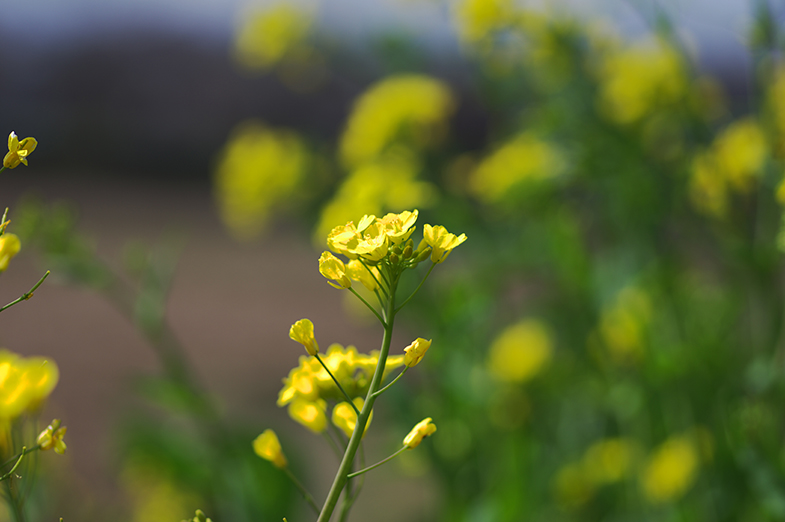Dealing with volunteer canola
Apr 16, 2021
“One of the big misconceptions out
there is that all volunteer canola is Roundup Ready
®, but it’s not,”
says Chris Hansen, a market development representative with Bayer in Carseland,
Alberta.
In fact, says Hansen, LibertyLink
® hybrids account for the largest canola acreage grown in Canada, followed by
Roundup Ready hybrids, with Clearfield
® pulling up third with less
than three percent of acres seeded to the yellow crop. There are other players
in the market, too, but it helps to know the rough division of acres when
you’re facing a volunteer canola problem.
“Any of the canola systems can
volunteer, just like any crop can volunteer,” says Hansen. “But canola tends to
be a harsher problem because the seeds are so small.” They also contain
herbicide tolerant traits that make control a bit more of a thoughtful exercise
than with other crop volunteers.
So what’s the best approach for
dealing with volunteer canola? Hansen has some suggestions.

Seed
management
“Step one is keeping the seed off
the ground,” he says. “That’s probably the number one volunteer control method.”
Hansen says there are two areas to focus
on: combine calibration and pod integrity.
The Canola Council of Canada (CCC)
says growers can lose up to 5 bu./ac. off the combine during harvest. Most
losses occur as those little seeds bounce away going into and coming out of the
combine. The CCC has some excellent tips to reduce combine losses to a
minimum.
But even before the crop is harvested,
Hansen says there is another way to reduce seed loss. “Look for hybrids with a
pod shatter trait,” he says. Whether you straight cut or swath, a good wind
event can leave a lot of seeds on the ground as brittle, maturing pods shatter.
He recognizes this isn’t always a
straightforward decision. “Some hybrids are known for shelling out a bit, but
if they do there’s usually a trade-off benefit elsewhere,” he says.
Post-harvest
control
“A post-harvest herbicide
application, or some kind of shallow tillage is useful,” says Hansen. “Try to
work those volunteers in the fall – if they germinate while it’s still warm,
they’ll frost off later.”
Tank
mix your herbicides
Of course, herbicides are the key tool when it comes to
controlling canola volunteers. But the incidence of herbicide resistance grows,
and as pretty much every volunteer canola plant carries a herbicide tolerance
trait of some description, how and when you use herbicides is more important
than ever.
“You can’t just spray glyphosate
and be done with it,” says Hansen. Tank mixing herbicides is key to reducing
the incidence of herbicide resistant weeds, including glyphosate-resistant
canola volunteers. He says Bayer’s Mix-It-Up site has a pile of great
information about herbicide and weed management strategies that can help.
Pre-seed
herbicides
“A pre-seed burn is your biggest
opportunity to control volunteer canola,” says Hansen. “A rule of thumb is: try
to tank mix when you can, don’t just go with glyphosate alone.”
Timing, he says, is key. “Follow
proper label directions and application timing guidelines to maximize herbicide
performance.” Hansen urges growers to think beyond volunteer canola – what
other weeds need to be controlled in the field and build your spray plan,
accordingly, matching your herbicide to your most difficult weeds.
Rotate
crops, not systems
“Rotating canola systems is kind of
a band aid solution to control volunteers,” says Hansen. The idea seems sound –
glyphosate will take out glufosinate-resistant volunteers and vice versa – but
it’s not.
“If farmers have been growing both
of the major trait systems, they’ve got volunteers of both in their field,” he
says. “Looking at good agronomics is a better step than wearing out your farm.
Canola-wheat-canola-wheat, even if you’re switching canola systems, is not
good.”
He suggests a canola-cereal-pulse-cereal
rotation to break weed cycles. Switching cereals between wheat and barley, or
including oats or rye if you can is also a good idea. And Hansen says the pulse
portion of that rotation could mean soybeans or corn if you’re in an area where
those grow well.
A
pat on the back
As challenging as it can be
sometimes to get control of volunteer canola, Hansen thinks most farmers are
doing a good job. “As much as you see guys complaining about volunteers,
they’re generally managing them well,” he says. “They know what they need to do
even though they might not always be able to do it.”
“Volunteer canola is an issue and
we can’t pretend it’s not,” says Hansen. “Unless canola hasn’t been grown on a
field for years, it’s going to be there.”
He’s confident, though, that as
long as farmers continue to stay on top of the issue, volunteer canola can be
successfully managed.
--
Top 10 tips to reduce combine losses